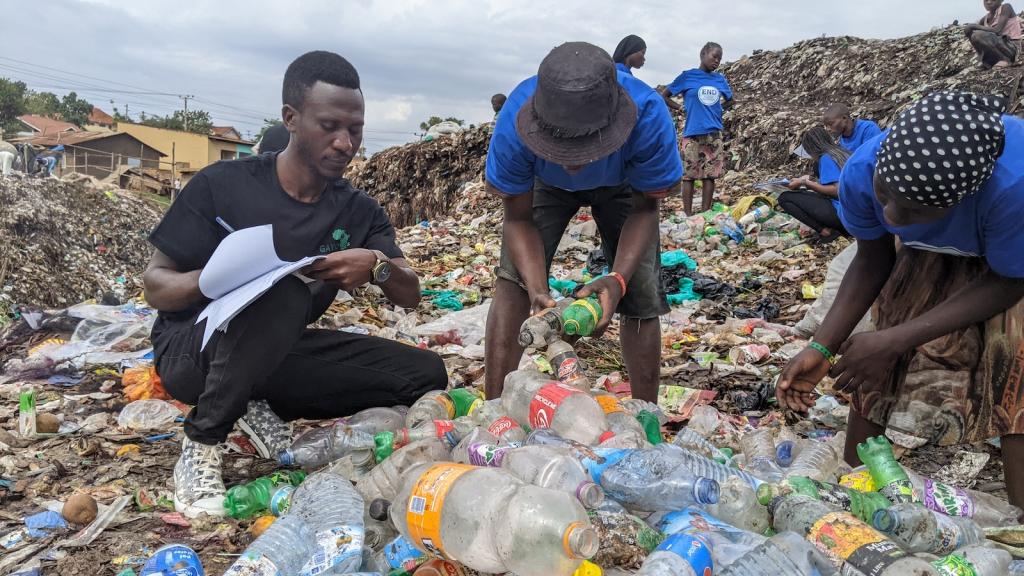The New York Times has a multi-bombshell piece on natural gas fracking, “Regulation Lax as Gas Wells’ Tainted Water Hits Rivers.” CP has done a great many pieces on the potential benefits of fracking — and the potential dangers (see “Getting to the bottom of natural gas fracking and links below).
But while unconventional natural gas might be an energy and climate game changer (over the near term) if it can be developed in an environmentally responsible fashion, the NYT piece itself may be a game changer.
Over the past nine months, The Times reviewed more than 30,000 pages of documents obtained through open records requests of state and federal agencies and by visiting various regional offices that oversee drilling in Pennsylvania. Some of the documents were leaked by state or federal officials.
You can find “the most significant documents … with annotations from The Times” by clicking here.
Here are some excerpts from the story:
But the relatively new drilling method — known as high-volume horizontal hydraulic fracturing, or hydrofracking — carries significant environmental risks. It involves injecting huge amounts of water, mixed with sand and chemicals, at high pressures to break up rock formations and release the gas.
With hydrofracking, a well can produce over a million gallons of wastewater that is often laced with highly corrosive salts, carcinogens like benzene and radioactive elements like radium, all of which can occur naturally thousands of feet underground. Other carcinogenic materials can be added to the wastewater by the chemicals used in the hydrofracking itself.
While the existence of the toxic wastes has been reported, thousands of internal documents obtained by The New York Times from the Environmental Protection Agency, state regulators and drillers show that the dangers to the environment and health are greater than previously understood.
The documents reveal that the wastewater, which is sometimes hauled to sewage plants not designed to treat it and then discharged into rivers that supply drinking water, contains radioactivity at levels higher than previously known, and far higher than the level that federal regulators say is safe for these treatment plants to handle.
Other documents and interviews show that many E.P.A. scientists are alarmed, warning that the drilling waste is a threat to drinking water in Pennsylvania. Their concern is based partly on a 2009 study, never made public, written by an E.P.A. consultant who concluded that some sewage treatment plants were incapable of removing certain drilling waste contaminants and were probably violating the law.
The Times also found never-reported studies by the E.P.A. and a confidential study by the drilling industry that all concluded that radioactivity in drilling waste cannot be fully diluted in rivers and other waterways.
But the E.P.A. has not intervened. In fact, federal and state regulators are allowing most sewage treatment plants that accept drilling waste not to test for radioactivity. And most drinking-water intake plants downstream from those sewage treatment plants in Pennsylvania, with the blessing of regulators, have not tested for radioactivity since before 2006, even though the drilling boom began in 2008.
In other words, there is no way of guaranteeing that the drinking water taken in by all these plants is safe.
And the citizens of Pennsylvania aren’t the only ones in harms way. There are many others:
There were more than 493,000 active natural-gas wells in the United States in 2009, almost double the number in 1990. Around 90 percent have used hydrofracking to get more gas flowing, according to the drilling industry.
Gas has seeped into underground drinking-water supplies in at least five states, including Colorado, Ohio, Pennsylvania, Texas and West Virginia, and residents blamed natural-gas drilling.
Air pollution caused by natural-gas drilling is a growing threat, too. Wyoming, for example, failed in 2009 to meet federal standards for air quality for the first time in its history partly because of the fumes containing benzene and toluene from roughly 27,000 wells, the vast majority drilled in the past five years.
In a sparsely populated Sublette County in Wyoming, which has some of the highest concentrations of wells, vapors reacting to sunlight have contributed to levels of ozone higher than those recorded in Houston and Los Angeles.
Back to the Keystone State. Here are some more of the NYT’s findings:
More than 1.3 billion gallons of wastewater was produced by Pennsylvania wells over the past three years, far more than has been previously disclosed. Most of this water — enough to cover Manhattan in three inches — was sent to treatment plants not equipped to remove many of the toxic materials in drilling waste.¶At least 12 sewage treatment plants in three states accepted gas industry wastewater and discharged waste that was only partly treated into rivers, lakes and streams.
¶Of more than 179 wells producing wastewater with high levels of radiation, at least 116 reported levels of radium or other radioactive materials 100 times as high as the levels set by federal drinking-water standards. At least 15 wells produced wastewater carrying more than 1,000 times the amount of radioactive elements considered acceptable.
So, are these levels of radioactivity dangerous? Here’s where the American Petroleum Institute comes in:
Industry officials say they are not concerned.
“These low levels of radioactivity pose no threat to the public or worker safety and are more a public perception issue than a real health threat,” said James E. Grey, chief operating officer of Triana Energy.
In interviews, industry trade groups like the Marcellus Shale Coalition and Energy in Depth, as well as representatives from energy companies like Shell and Chesapeake Energy, said they were producing far less wastewater because they were recycling much of it rather than disposing of it after each job.
But even with recycling, the amount of wastewater produced in Pennsylvania is expected to increase because, according to industry projections, more than 50,000 new wells are likely to be drilled over the next two decades.
The radioactivity in the wastewater is not necessarily dangerous to people who are near it. It can be blocked by thin barriers, including skin, so exposure is generally harmless.
Rather, E.P.A. and industry researchers say, the bigger danger of radioactive wastewater is its potential to contaminate drinking water or enter the food chain through fish or farming. Once radium enters a person’s body, by eating, drinking or breathing, it can cause cancer and other health problems, many federal studies show.
Little Testing for Radioactivity
Under federal law, testing for radioactivity in drinking water is required only at drinking-water plants. But federal and state regulators have given nearly all drinking-water intake facilities in Pennsylvania permission to test only once every six or nine years.
The Times reviewed data from more than 65 intake plants downstream from some of the busiest drilling regions in the state. Not one has tested for radioactivity since 2008, and most have not tested since at least 2005, before most of the drilling waste was being produced.
And in 2009 and 2010, public sewage treatment plants directly upstream from some of these drinking-water intake facilities accepted wastewater that contained radioactivity levels as high as 2,122 times the drinking-water standard. But most sewage plants are not required to monitor for radioactive elements in the water they discharge. So there is virtually no data on such contaminants as water leaves these plants. Regulators and gas producers have repeatedly said that the waste is not a threat because it is so diluted in rivers or by treatment plants. But industry and federal research cast doubt on those statements.
A confidential industry study from 1990, conducted for the American Petroleum Institute, concluded that “using conservative assumptions,” radium in drilling wastewater dumped off the Louisiana coast posed “potentially significant risks” of cancer for people who eat fish from those waters regularly.
The industry study focused on drilling industry wastewater being dumped into the Gulf of Mexico, where it would be far more diluted than in rivers. It also used estimates of radium levels far below those found in Pennsylvania’s drilling waste, according to the study’s lead author, Anne F. Meinhold, an environmental risk expert now at NASA.
Other federal, state and academic studies have also found dilution problems with radioactive drilling waste.
Uh, okay, NYT, you’ve sold me on the notion that I shouldn’t trust industry statements that these levels of radioactivity are harmless.
BUT how about a little follow up on that 1990 API study. Has the petroleum industry kept knowingly dumping wastewater with radium in it off the Louisiana coast that could be causing cancer in people? I’m sure the beleaguered people of the Bayou state would be interested in the answer.
The bottom line this bombshell story is that the natural gas industry should no longer be given any presumption of innocence or safety in regards the health impacts of fracking. Time for the EPA and the wastewater industry to do some testing and inform the public of the dangers.
Read also:
- Frack Attack: Drilling Technique Under Scrutiny by Tom Kenworthy
- Energy industry fights chemical disclosure
- A double standard for natural gas?


